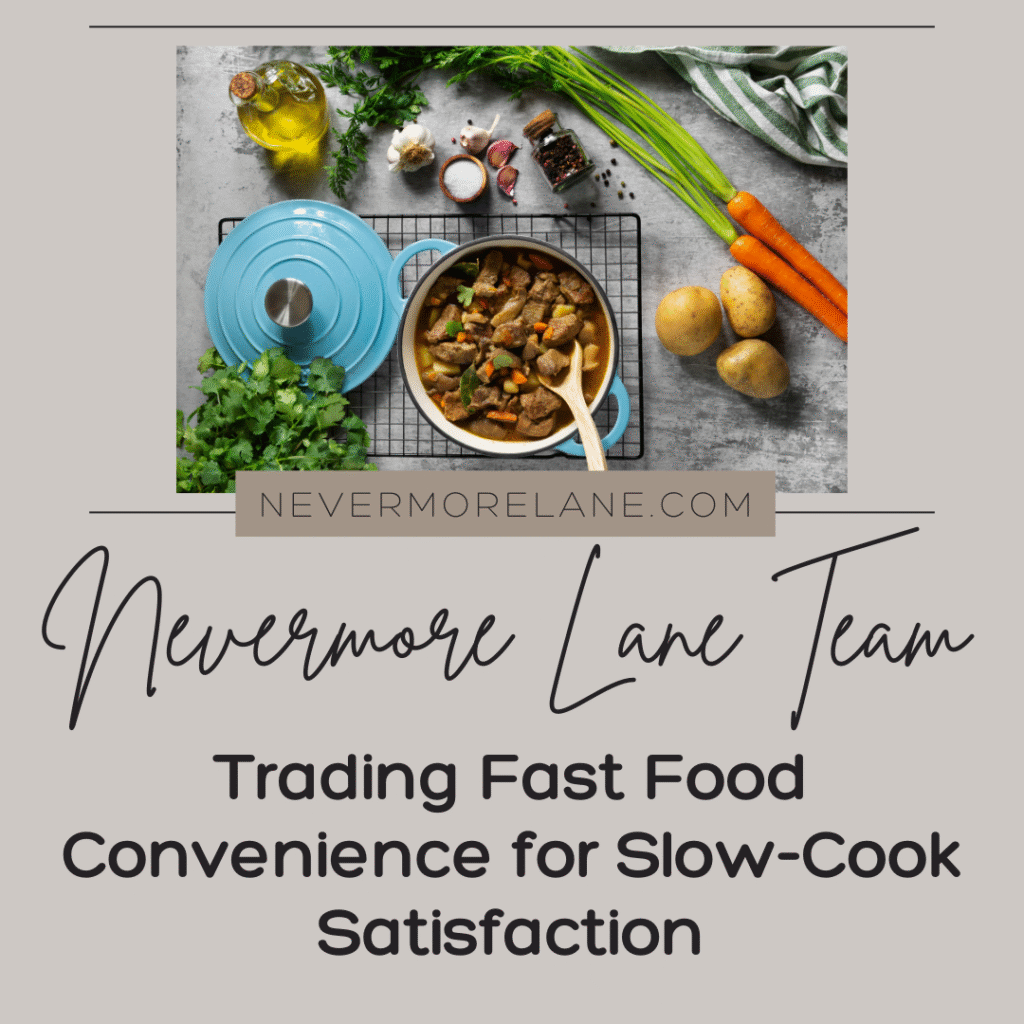Trading Fast Food Convenience for Slow-Cook Satisfaction
The drive-through has become a second home, a reliable solution when exhaustion wins the daily battle against good intentions about cooking real meals. Fast food offers immediate gratification that requires zero planning, prep work, or cleanup, filling bellies efficiently if not particularly nourishing bodies or souls. The convenience feels indispensable during chaotic weeks when choosing between cooking and collapsing becomes no choice at all. Yet the accumulating cost, declining health markers, and vague guilt about what’s actually being consumed create growing awareness that this convenient solution extracts hidden prices that money alone cannot measure.
Slow cooking represents the antithesis of everything that makes fast food appealing, demanding forethought, ingredient preparation, and hours of waiting that seem impossible for lives already stretched beyond capacity. The name itself sounds like a luxury reserved for people with spare time and energy that working families, students, and overwhelmed individuals simply don’t possess. This perception creates the divide that keeps people trapped in drive-through cycles despite knowing better options exist. The truth challenges these assumptions entirely because slow cookers actually require less active involvement than most cooking methods, transforming affordable ingredients into deeply satisfying meals through time rather than effort while filling homes with aromas that fast food bags never could.
The transition from fast food convenience to slow-cooker satisfaction doesn’t require personality transformation or lifestyle overhaul. It happens through small shifts that gradually replace rushed eating with intentional nourishment, anonymous corporate food with home-cooked meals carrying actual care, and the empty feeling after fast food with genuine satisfaction that sustains both body and spirit. Understanding how slow cooking fits into real life rather than idealized fantasies removes barriers that keep this simple tool feeling impossibly out of reach.
Reclaiming Real Flavor
Fast food offers salt and sugar; real cooking offers flavor that stays with you. Ten extra minutes at the counter can lift simple ingredients into something worth remembering. A handful of fresh herbs, a shake of your favorite rubs, or a proper rest for meat builds texture and depth no sauce packet can match. Keep prep focused: protein, seasoning, heat, rest.
Use coarse salt early and fine salt late to wake dull elements; seasoning both before and after cooking builds layers that register on the palate. Do not dump everything in the pan; make leftovers deliberate by cooking double portions so reheating improves flavor instead of flattening it, leaving practical, ready meals for the week.
Ingredient Integrity Over Additives
Whole ingredients give cleaner flavor and clear control over taste. Clean-label cooking is practical, not moral; it removes mystery ingredients. Check labels for anti-caking agents, added sugar, or “natural flavor” catch-alls because they flatten taste and waste money. Cuso Cuts’ no-seed-oil, non-GMO blends match that practical standard.
Stock five go-to spices: paprika, black pepper, garlic, onion and chili, then layer specialty blends for variety. Use oils suited to the heat: avocado or olive for searing, butter for finishing to add richness. Freeze chopped herbs and custom spice mixes in ice-cube trays so quick flavor shots beat bottled sauces, keeping weeknight cooking simple and flavorful.
Time as a Flavor Tool
Slower cooking deepens flavor because seasonings and proteins mingle longer, letting amino acids and sugars interact for more complex browning. Rest marinated meats at least 30 minutes so surface sugars can caramelize instead of burning, which adds aroma and a natural sweetness that reads as richness rather than added sugar.
Keeping the first few minutes quiet helps form a natural crust; avoid flipping or stirring until the surface sets. Use carryover heat by pulling proteins slightly early and letting them finish off the pan. Batch-prep sauces or grains so dinners assemble quickly while core flavors come from slow technique, a habit that keeps weeknights satisfying.
Tools That Earn Their Keep
A sharp knife and a steady pan carry more weight than any gadget. Precision grows from familiarity—the sound of a blade meeting board, the gleam of steel kept clean. One dependable pan becomes a teacher in heat and patience, each surface mark a record of meals made with care rather than haste.
Balance form with function. A good knife glides, not forces, and a pan should heat like memory—slow to fade, steady to return. Care for tools as extensions of craft: dry them by hand, store them safely, and they’ll serve faithfully. Fewer, better pieces turn cooking into rhythm, not routine.
Cooking as Connection
A shared meal pulls people to the table and gives ordinary evenings purpose. Preparing food lets moments happen around the stove, where chopping and tasting fold into conversation and create memories. Centering a gathering on a single main dish like taco night or grilled skewers keeps guests involved and lowers decision fatigue so interaction becomes the meal.
Label rubs and sauces with brief flavor notes and suggested uses to make homemade gifts feel finished. Host a monthly batch-cook with friends to share costs and techniques and build a practical stash of ready meals. Turn phones off and play a shared playlist so the focus stays on cooking together.
Let Time Do the Cooking While You Live Your Life
Slow cooking delivers satisfaction through minimal effort distributed differently than fast food’s instant gratification. Morning minutes spent combining ingredients in the cooker replace evening drive-through stops. Affordable cuts of meat become tender perfection. Dried beans transform into creamy comfort without constant monitoring. The appliance works independently for hours, creating ready meals that greet arrivals home with warmth fast food cannot replicate.
The practical benefits extend beyond individual meals into financial savings, improved nutrition, reduced waste, and reclaimed kitchen confidence. Batch cooking provides multiple meals from single preparation sessions. Leftovers taste better than their fast food equivalents. The predictability of coming home to a finished dinner removes decision fatigue that drives poor food choices. Health improves gradually through consistent real food consumption.
Trading convenience for satisfaction means recognizing that slow cooking offers its own form of ease, just distributed across time rather than compressed into rushed moments. The exchange gives back more than it takes through meals that nourish deeply, homes that smell welcoming, and the quiet pride of feeding yourself and loved ones with actual care. Sometimes the most convenient choice involves planning ahead so that convenience becomes automatic rather than requiring constant last-minute scrambling toward whatever’s fastest in the moment.





